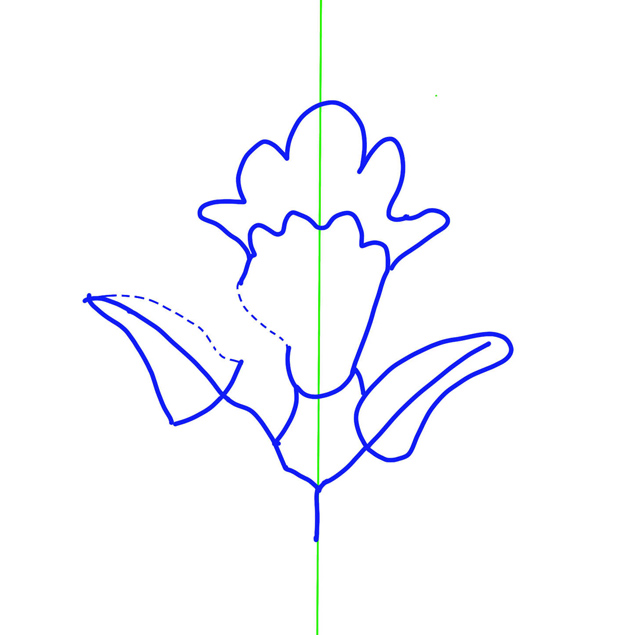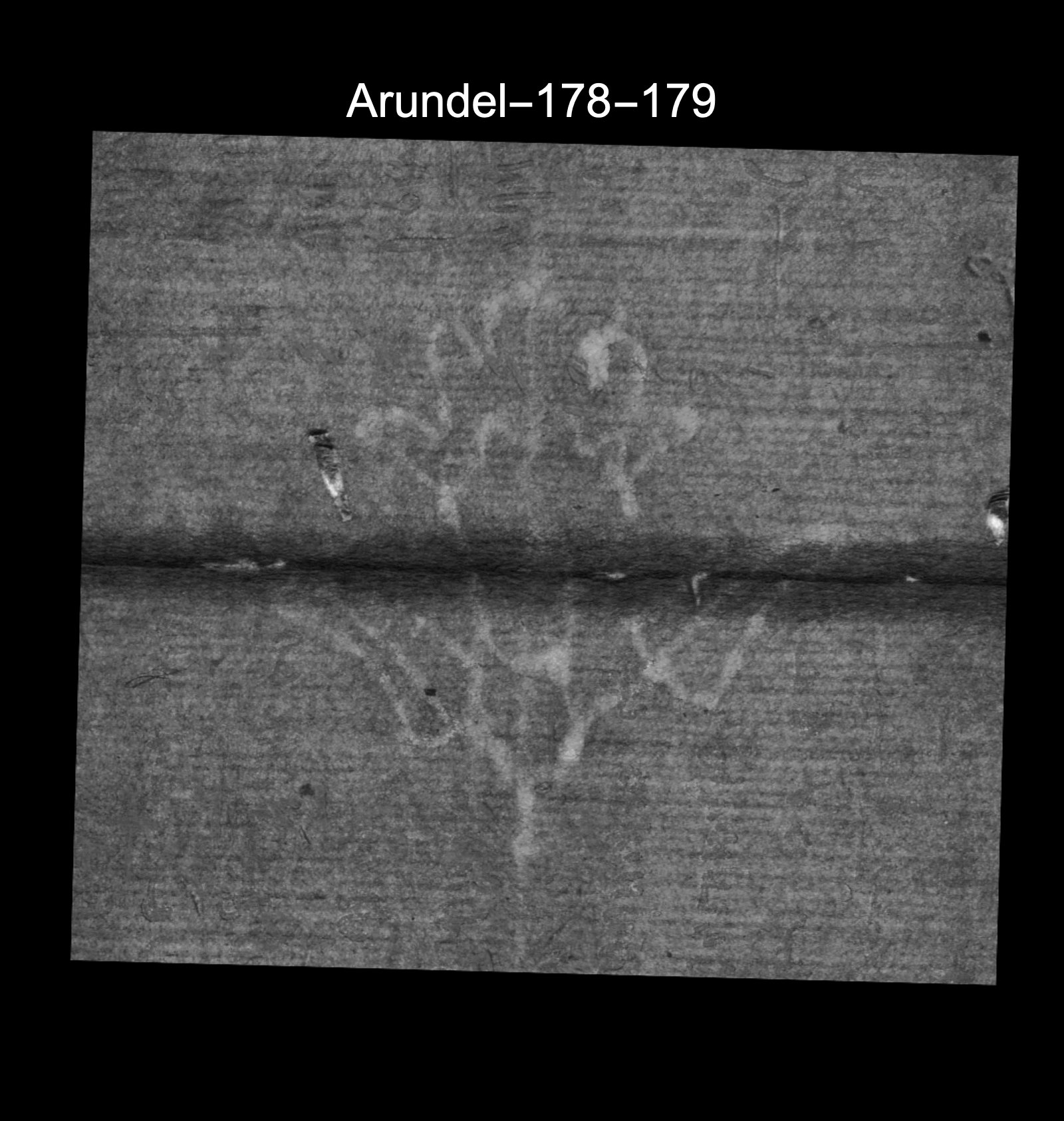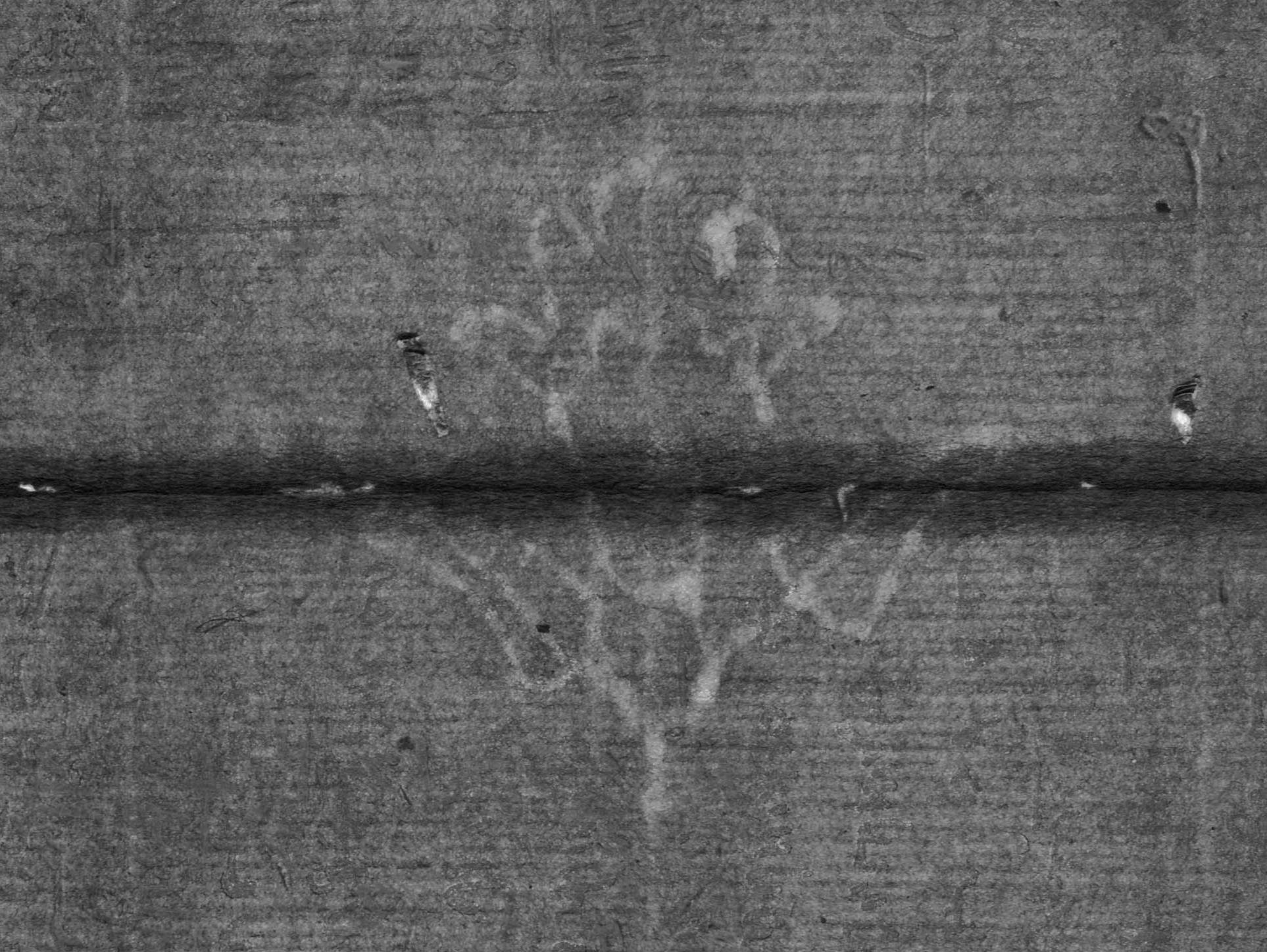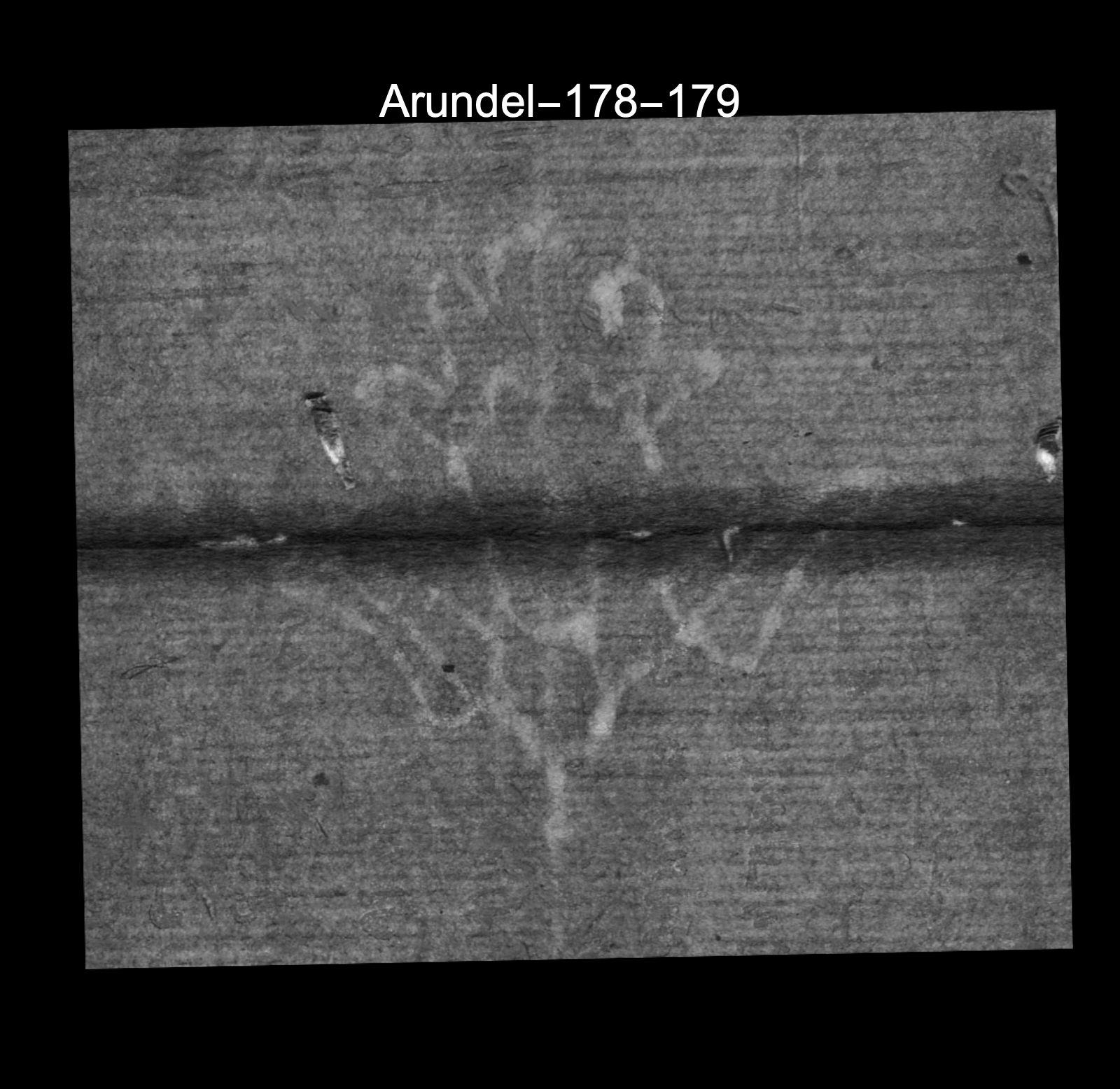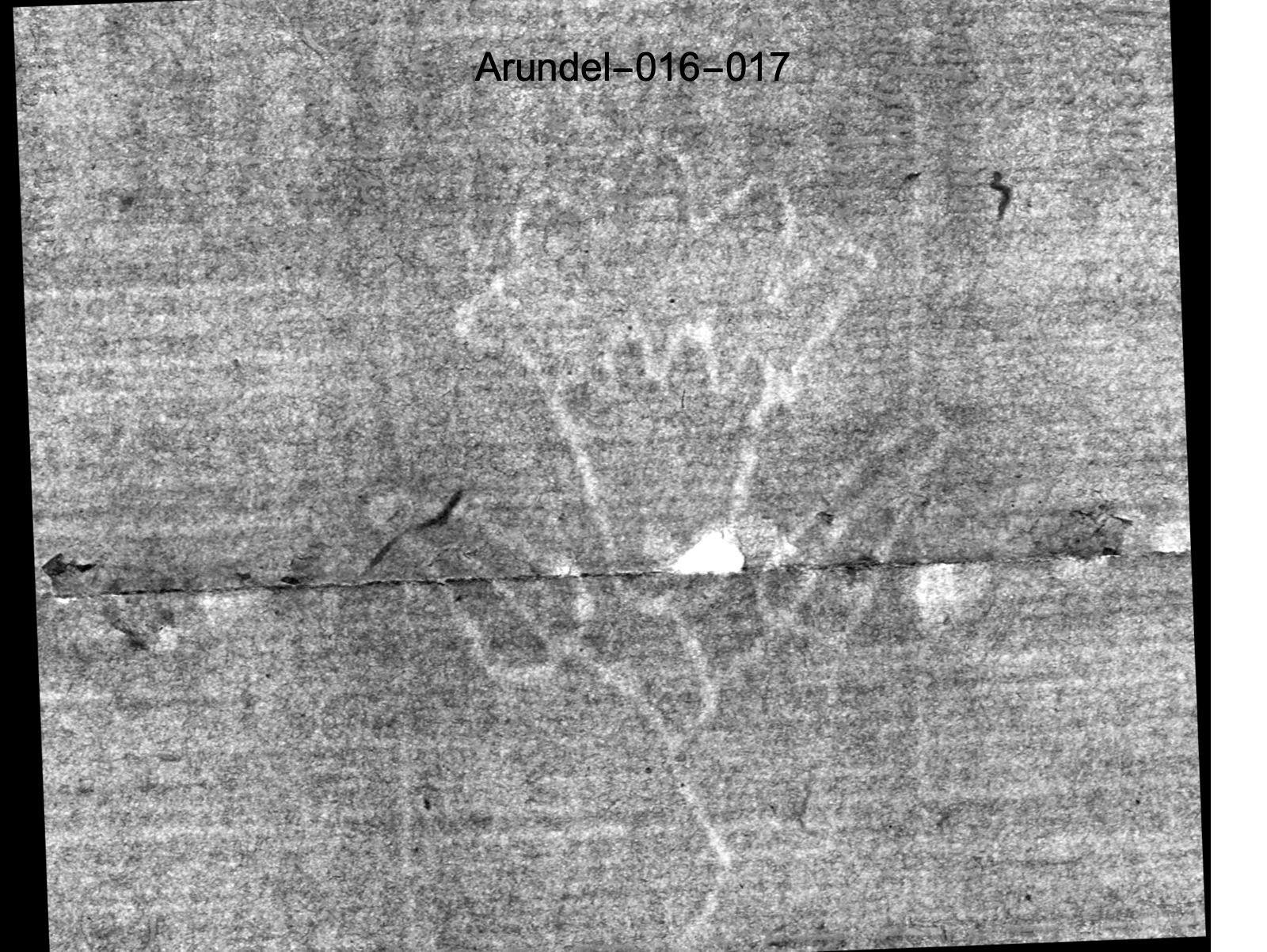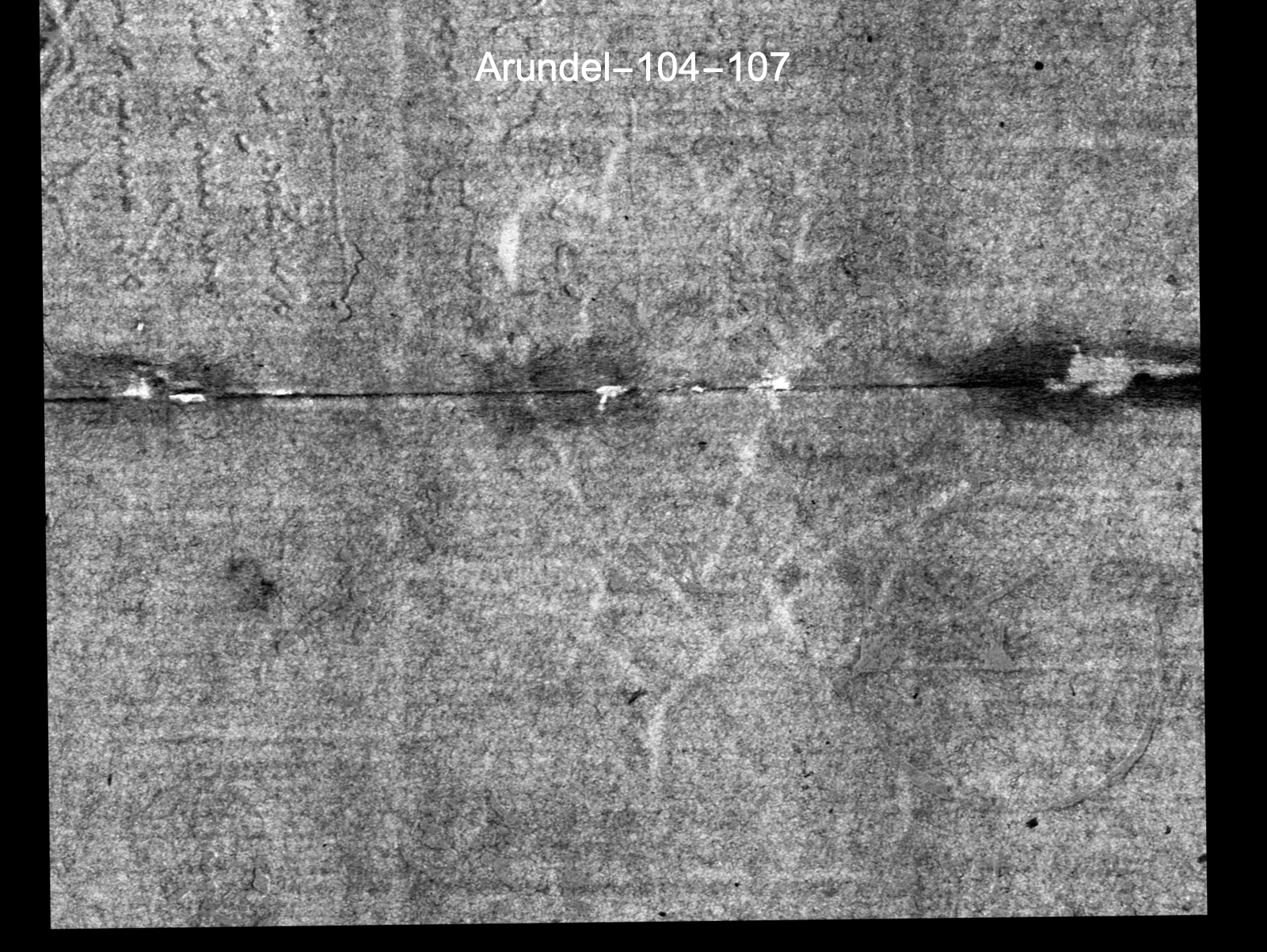Flower – Group E
Description: A cone-shaped flower seen from the front, with a curving stem and two tapered leaves, one on each side.
Also known as: tulip; jonquil.
Description of difference: The flower in Group E has long, triangular leaves that curve downwards, and a stem with two bends. One leaf is very close to the base of the flower, while the other leaf is not, and has a small bend in its stem. Flowers in Groups A, B, and E are centered on a chain line.
Briquet Comparison: B 6661, B 6664.[1]
Found in folios: Arundel ff. 178-179.
Potential Twins: N/A
[1] Because similarities to Briquet’s watermarks continue to be included in the literature, they have been cited here. Briquet comparisons were extracted from Carlo Pedretti and Carlo Vecce in “Apparati IV, V, Filigrane,” Il Codice Arundel 263 nella British Library: edizione in facsimile nel riordinamento cronologico dei suoi fascicoli (Florence: Giunti, 1998), 58-61; Carlo Pedretti, The Codex Hammer of Leonardo da Vinci, translated into English and annotated by Carlo Pedretti (Florence: Giunti Barbèra, 1987); Carmen C. Bambach in Leonardo da Vinci Rediscovered, 4 vols. (New Haven and London: Yale University Press, 2019); and Juliana Barone, ed., Leonardo da Vinci: A Mind in Motion, exh. cat. (London: The British Library, 2019).
Arundel ff. 178-179
Available images (below):
– De-noised image of watermark in Arundel ff. 178-179
– Overlay animation of Arundel ff. 178-179 and Leicester Sheet 7 (Group E and Group A)
– Overlay animation of Arundel ff. 178-179 and Leicester Sheet 6 (Group E and Group B)
– Overlay animation of Arundel ff. 178-179 and Arundel ff. 16-17 (Group E and Group C)
– Overlay animation of Arundel ff. 178-179 and Arundel ff. 104-107 (Group E and Group D)

